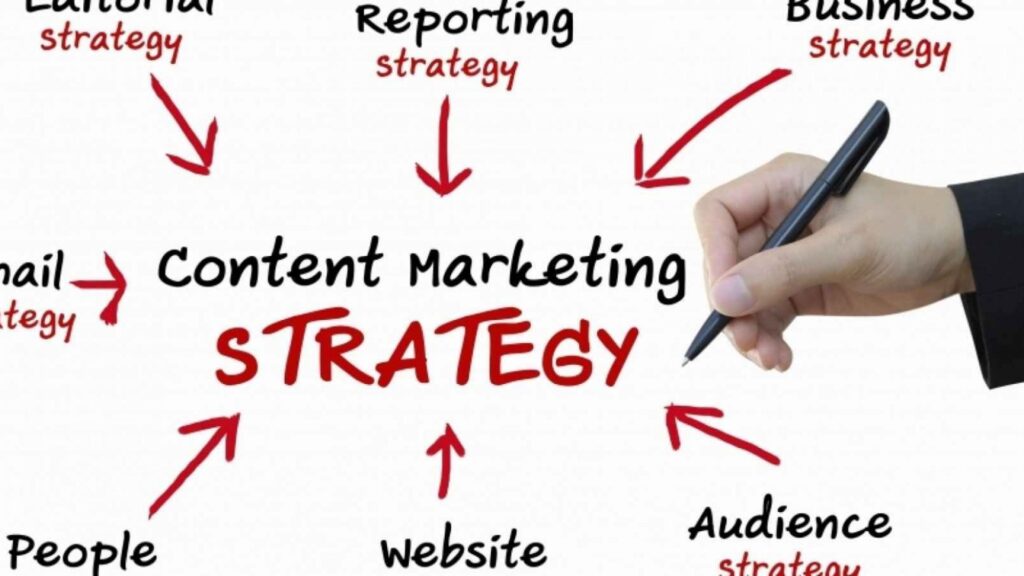8 Ways to Improve Student Experience & Boost Retention

In today’s competitive educational landscape, institutions face the ongoing challenge of not only attracting students but also ensuring their success and retention. A positive student experience is key to fostering engagement, satisfaction, and ultimately, retention rates. To address this vital aspect of education, here are eight effective strategies to enhance the student experience and boost retention: 1. Personalized Learning Paths: Recognize that each student has unique learning needs and preferences. Implement personalized learning paths that cater to individual strengths, weaknesses, and interests. Utilize adaptive learning technologies, student analytics, and faculty support to tailor educational experiences that resonate with each learner. 2. Comprehensive Support Services: Provide comprehensive support services to address students’ academic, emotional, and social needs. Offer tutoring, counselling, mentorship programs, and career services to help students navigate challenges, overcome obstacles, and stay on track towards their goals. 3. Engaging Learning Environments: Create engaging and interactive learning environments that foster collaboration, creativity, and critical thinking. Incorporate multimedia resources, hands-on activities, group projects, and real-world applications to make learning relevant and enjoyable for students. 4. Transparent Communication: Establish clear and transparent communication channels between students, faculty, and administrators. Keep students informed about academic expectations, course requirements, deadlines, and campus resources. Encourage open dialogue, feedback, and active participation to build a sense of community and belonging. 5. Embrace Technology: Harness the power of technology to enhance the student experience both inside and outside the classroom. Utilize learning management systems (LMS), mobile apps, virtual classrooms, and online collaboration tools to facilitate anytime, anywhere learning, and foster a culture of innovation and digital fluency. 6. Cultivate a Supportive Community: Create a supportive and inclusive campus community where students feel valued, connected, and empowered. Organize extracurricular activities, clubs, events, and volunteer opportunities to promote social interaction, networking, and personal growth. Foster a culture of diversity, equity, and inclusion that celebrates differences and promotes mutual respect. 7. Continuous Feedback and Assessment: Implement regular feedback mechanisms and assessment strategies to gauge student satisfaction, engagement, and progress. Solicit input from students through surveys, focus groups, and course evaluations to identify areas for improvement and make data-driven decisions to enhance the student experience. 8. Prioritize Student Success Initiatives: Make student success a top priority across all levels of the institution. Allocate resources, funding, and personnel to support student success initiatives such as academic advising, retention programs, faculty development, and research opportunities. Foster a culture of excellence and continuous improvement that empowers students to achieve their full potential. Conclusion: In conclusion, enhancing the student experience is essential for promoting student success and boosting retention rates in higher education. A digital marketing agency implements these eight strategies – personalized learning paths, comprehensive support services, engaging learning environments, transparent communication, embracing technology, cultivating a supportive community, continuous feedback and assessment, and prioritizing student success initiatives – institutions can create an environment that fosters student engagement, satisfaction, and ultimately, academic success. Together, let’s empower students to thrive and realize their aspirations in the pursuit of knowledge and lifelong learning.
Is Your Website Working For Your Business?

In the fast-paced digital landscape of today, having a strong online presence is essential for businesses of all sizes. Your website serves as the virtual front door to your brand, often making the first impression on potential customers. But is your website truly working for your business? As a digital marketing agency, we understand the critical importance of a well-designed and optimized website in driving business success. Let’s delve into why your website matters and how you can assess its effectiveness. The Importance of a Strong Website: Assessing Your Website’s Effectiveness: Optimizing Your Website for Success: In conclusion, your website plays a crucial role in the success of your business in the digital age. By assessing its effectiveness and implementing optimization strategies, you can ensure that your website is working hard to attract, engage, and convert visitors into loyal customers. As a digital marketing agency, we’re here to help you maximize the potential of your website and achieve your business goals in the online world.
Being Needed, Not Needy: How To Create Content People Want

It’s simple to create content just for the sake of making it, without thinking about whether it will actually resonate with your audience, in the wide digital environment of content creation. The secret to success is to produce material that satisfies a real need or want rather than inundating people with it. Put differently, it’s about being useful rather than selfish. So, how can you make sure that the information you offer is something that readers would genuinely be interested in? Now let’s discuss some tactics. Understand Your Audience The foundation of creating content that people want lies in understanding your audience. Take the time to research their demographics, interests, and pain points. What challenges are they facing? What questions do they have? By gaining insights into their needs, you can tailor your content to provide valuable solutions and information. Provide Value Your content should offer something of value to your audience. Whether it’s educational, entertaining, or inspirational, it should enrich their lives in some way. This could be through practical tips, in-depth analysis, or compelling storytelling. Always ask yourself: Does this content address a specific need or interest of my audience? Be Authentic Authenticity is crucial in today’s digital age. People are drawn to content that feels genuine and relatable. Don’t try to mimic other creators or adopt a persona that isn’t true to who you are. Instead, let your unique voice and perspective shine through in your content. Authenticity in content marketing builds trust and fosters a deeper connection with your audience. Listen and Engage Building a two-way relationship with your audience is essential. Listen to their feedback, comments, and suggestions. What are they saying about your content? What do they want to see more of? Engage with them genuinely, whether it’s through responding to comments, hosting Q&A sessions, or conducting polls. By actively involving your audience, you demonstrate that their opinions matter, and you can tailor your content accordingly. Stay Relevant The field of digital marketing is constantly evolving, and so are the needs and interests of your audience. Stay abreast of current trends, topics, and discussions within your niche. Keep your content fresh and relevant by addressing timely issues and providing insights into emerging trends. This shows that you’re attuned to the pulse of your audience and the broader industry. Quality Over Quantity In the age of information overload, quality trumps quantity. Instead of churning out content at a rapid pace, focus on creating high-quality, well-researched pieces that offer depth and value. A single piece of exceptional content can have a far greater impact than a dozen mediocre ones. Prioritize substance, clarity, and relevance in your content creation process. Diversify Your Content People have different preferences when it comes to consuming content. Some may prefer articles, while others gravitate towards videos, podcasts, or infographics. Diversify your content formats to cater to varied preferences and maximize your reach. Experiment with different mediums to see what resonates best with your audience. Optimize for Search and Social Make it easy for people to discover your content by optimizing it for search engines and social media. Use relevant keywords, hashtags, and meta descriptions to improve your visibility and reach. Share your content across various social media platforms and engage with communities related to your niche. By optimizing your content for search and social, you increase its chances of being found and shared by your target audience. In conclusion, creating content that people actually want involves understanding their needs, providing value, and fostering authentic connections. By focusing on being needed rather than needy, you can create content that resonates deeply with your audience and establishes you as a trusted authority in your niche. Remember to listen, adapt, and always strive to deliver content that enriches the lives of your audience.
The Evolution of Marketing Attribution: A Journey Through Time

The concept of attribution has undergone a remarkable evolution. From its humble beginnings as a rudimentary tracking tool to its current incarnation as a sophisticated analytics powerhouse, the history of marketing attribution is a testament to the relentless pursuit of understanding consumer behaviour and optimizing marketing efforts. The Early Days: Last-Click Attribution In the early days of digital marketing, measuring the effectiveness of advertising campaigns was a crude affair. Marketers relied primarily on last-click attribution, attributing all credit for a conversion to the last interaction a user had with a marketing touchpoint before making a purchase. While this approach provided some level of insight, it often failed to capture the full complexity of the customer journey. The Rise of Multi-Touch Attribution As digital marketing channels proliferated and consumer behaviour became increasingly complex, the limitations of last-click attribution became apparent. Marketers began to embrace multi-touch attribution models, which sought to assign value to each touchpoint along the customer journey. By tracking interactions across various channels and devices, multi-touch attribution provided a more nuanced understanding of how different marketing efforts contributed to conversions. Challenges and Innovations Yet, even multi-touch attribution had its shortcomings. Attribution models struggled to account for the interconnectedness of online and offline touchpoints, as well as the impact of factors such as time lag and ad viewability. However, advancements in technology, such as machine learning and data integration, have enabled marketers to overcome these challenges and develop more sophisticated attribution models. The Future of Marketing Attribution Looking ahead, the future of marketing attribution promises even greater advancements. As data collection methods become more sophisticated and consumer privacy concerns continue to shape industry practices, marketers will need to adopt new approaches to attribution that balance the need for insights with respect for user privacy. Additionally, the proliferation of artificial intelligence and predictive analytics will empower marketers to anticipate consumer behaviour and optimize marketing strategies in real-time. Summing it up The history of marketing attribution is a testament to the ingenuity and perseverance of marketers in their quest to understand and influence consumer behaviour. From the early days of last-click attribution to the cutting-edge predictive analytics of the future, attribution has played a vital role in shaping digital marketing strategies and driving business success. As technology continues to evolve and consumer expectations evolve, marketers must remain vigilant, adapting their approaches to attribution to stay ahead of the curve and deliver value to their organizations.
What is Digital PR and How Can You Develop an Effective Strategy?

Public relations (PR) has expanded to include a wider range of activities defined as “Digital PR” in today’s digital environment, moving beyond the traditional media outreach. This innovative marketing strategy makes use of digital platforms to improve brand recognition, engagement, and visibility. We’ll examine what digital PR is all about in this article and look at some tactics for creating an effective campaign. What is Digital PR? Digital PR involves utilizing digital platforms such as social media, online publications, blogs, influencers, and search engines to manage a brand’s reputation and connect with its audience. Unlike traditional PR, Digital PR focuses on maximizing online exposure, generating buzz, and fostering relationships in the digital realm. Components of an Effective Digital PR Strategy: Define Objectives: Begin by outlining clear objectives aligned with your overall digital marketing goals. Whether it’s increasing brand awareness, driving website traffic, or enhancing online reputation, defining specific objectives will guide your strategy. Audience Research: Understand your target audience’s preferences, behaviors, and online habits. This insight will inform your content creation and outreach efforts, ensuring they resonate with the intended audience. Content Creation: Develop compelling and shareable content tailored to your audience’s interests. This may include press releases, blog posts, infographics, videos, or interactive media. High-quality content forms the foundation of any successful Digital PR campaign. Media Relations: Forge relationships with journalists, bloggers, influencers, and industry experts in your niche. Engage with them through personalized pitches, press releases, guest contributions, and media partnerships to secure coverage and endorsements. Social Media Engagement: Leverage social media platforms to amplify your brand’s message, engage with followers, and cultivate a community around your brand. Share relevant content, participate in conversations, and monitor feedback to maintain a positive online presence. SEO Integration: Integrate search engine optimization (SEO) techniques into your Digital PR efforts to improve visibility and organic search rankings. Optimize press releases, guest posts, and online content with relevant keywords and backlinks to enhance discoverability. Measurement and Analysis: Monitor the performance of your Digital PR activities using key metrics such as website traffic, social media engagement, brand mentions, and backlinks. Analyze data regularly to identify areas of improvement and refine your strategy accordingly. In a Nutshell: Digital PR offers unparalleled opportunities to elevate your brand’s presence and reputation in the digital landscape. By adopting a strategic marketing approach focused on audience engagement, content excellence, and relationship-building, businesses can cultivate a robust Digital PR strategy that drives meaningful results and fosters long-term success.
Exploring the Role of Chatbots and AI Assistants in Customer Service and Sales

In today’s fast-paced digital landscape, marketing agencies are constantly seeking innovative ways to streamline operations, enhance customer engagement, and drive sales. One such innovation that has revolutionized the industry is the integration of chatbots and AI assistants. In this blog, we will explore how these intelligent technologies are reshaping marketing agency operations and driving success in the modern era. Enhancing Customer Service: Chatbots and AI assistants are invaluable tools for providing efficient and personalized customer service. They can handle customer inquiries, provide real-time assistance, and offer product information, all while delivering a seamless and responsive experience. By automating these processes, marketing agencies can free up valuable time and resources while ensuring consistent and high-quality customer support. Driving Sales and Lead Generation: Beyond customer service, chatbots and AI assistants play a crucial role in driving sales and lead generation. These intelligent technologies can identify and qualify potential leads, initiate sales conversations, and nurture prospects through the sales funnel. By leveraging data-driven insights and personalized messaging, marketing agencies can optimize their sales processes and achieve higher conversion rates. Marketing Automation: Chatbots and AI assistants also enable marketing automation, allowing agencies to execute targeted marketing campaigns and deliver personalized content across multiple channels. Whether it’s sending promotional messages, recommending products, or engaging with customers on social media, these automated tools streamline marketing efforts and maximize efficiency. Gathering Insights and Analytics: One of the key advantages of chatbots and AI assistants is their ability to gather insights and analytics from customer interactions. By analyzing data on user behavior, preferences, and engagement patterns, marketing agencies can gain valuable insights into their target audience and refine their marketing strategies accordingly. This data-driven approach allows agencies to continuously optimize their campaigns and improve the overall customer experience. Conclusion: In conclusion, the integration of chatbots and AI assistants has transformed marketing agency operations, empowering businesses to deliver exceptional customer experiences, drive sales, and achieve their marketing goals more efficiently than ever before. As these technologies continue to evolve, marketing agencies must embrace innovation and leverage intelligent automation to stay ahead in the competitive digital landscape. By embracing chatbots and AI assistants, marketing agencies can unlock new opportunities for growth, efficiency, and success in the ever-evolving world of digital marketing.
Strategies for Handling Negative Feedback and PR Disasters

Social media has developed into a potent tool for businesses to engage with their audience in the current digital era. But immense power also carries great responsibility, and mishaps do happen occasionally. A brand’s credibility and reputation can be jeopardized at any time by negative reviews, PR catastrophes, and crises. We’ll look at practical methods for dealing with these circumstances and transforming adversity into opportunity in this blog. Understanding the Impact of Social Media Crises: Social media marketing crises can escalate rapidly, spreading like wildfire across platforms and damaging a brand’s image within seconds. Whether it’s a customer complaint gone viral, a product recall, or a PR misstep, businesses must be prepared to respond swiftly and effectively to protect their reputation and mitigate damage. Key Strategies for Social Media Crisis Management: Proactive Monitoring: Regularly monitor social media channels for any mentions of your brand, products, or key personnel. Early detection allows you to address issues before they escalate into full-blown crises. Swift Response: Time is of the essence when it comes to crisis management in social media marketing. Acknowledge the issue publicly and respond promptly with empathy and transparency. Avoid deleting negative comments or posts, as this can fuel further backlash. Transparency and Honesty: Be transparent about the situation and provide honest updates as the crisis unfolds. Authenticity breeds trust, and customers appreciate brands that take responsibility for their actions. Empathetic Communication: Show empathy towards affected parties and acknowledge their concerns. Personalized responses and genuine apologies can go a long way in diffusing tense situations and rebuilding trust. Internal Communication: Ensure clear and consistent communication within your organization to coordinate responses and actions. Establish a designated crisis management team with predefined roles and responsibilities. Social Listening and Engagement: Actively engage with your audience during a crisis, addressing their questions, concerns, and feedback in real-time. Demonstrate your commitment to resolving the issue and providing satisfactory solutions. Preparedness and Training: Invest in crisis preparedness training for your social media team and key stakeholders. Conduct regular simulations and drills to test your crisis management protocols and identify areas for improvement. Turning Crisis into Opportunity: While social media marketing crises can be daunting, they also present an opportunity for brands to showcase their resilience, integrity, and commitment to customer satisfaction. By handling crises with grace, transparency, and empathy, businesses can emerge stronger and more trusted in the eyes of their audience. Conclusion: Social media crises are inevitable in today’s interconnected world, but with the right strategies and mindset, they can be effectively managed and even turned into opportunities for growth. By prioritizing proactive monitoring, swift response, transparency, and empathy, businesses can navigate the storm of social media crises with confidence and emerge stronger on the other side.
Brand Positioning Strategies: Setting Your Brand Apart in a Competitive Market

Success in today’s very competitive business environment depends on building a strong brand presence. However, it can be difficult to stand out from the crowd when there are so many businesses fighting for consumers’ attention. Here’s where brand positioning tactics come into play, a digital marketing agency helps companies to establish a unique brand and meaningfully engage with their target market. Understanding Brand Positioning: Brand positioning refers to the unique space a brand occupies in the minds of consumers relative to its competitors. It encompasses how a brand is perceived, the value it offers, and the emotional connection it fosters with its audience. Effective brand positioning sets the stage for differentiation and helps businesses establish a compelling narrative that resonates with their target market. Identifying Your Unique Selling Proposition (USP): At the heart of brand positioning lies the concept of the Unique Selling Proposition (USP) – the distinctive attribute or benefit that sets your brand apart from others in the market. Whether it’s superior quality, innovative features, or exceptional customer service, identifying and emphasizing your USP is crucial for creating a compelling brand identity that captures consumers’ attention and loyalty. Conducting Market Research: A marketing and advertising company develops effective brand positioning strategies, businesses must gain deep insights into their target market, competitors, and industry trends. Conducting thorough market research helps uncover consumer preferences, pain points, and unmet needs, enabling brands to tailor their messaging and offerings to better address customer demands. Defining Your Target Audience: Successful brand positioning begins with a clear understanding of your target audience – the demographic, psychographic, and behavioural characteristics of the consumers you aim to reach. A marketing and advertising agency segments your audience and creates detailed buyer personas, you can tailor your brand messaging and communication channels to resonate with the specific needs and preferences of different consumer segments. Crafting a Compelling Brand Story: Storytelling is a powerful tool for brand positioning, allowing businesses to convey their values, mission, and unique attributes compellingly and memorably. By weaving a cohesive brand narrative that evokes emotion and resonates with consumers’ aspirations, brands can forge deeper connections and foster long-term loyalty among their audience. Consistency Across Channels: Consistency is key to effective brand positioning. From your brand messaging and visual identity to your products/services and customer experience, maintaining a consistent brand image across all touchpoints is essential for reinforcing your positioning and building trust with consumers. Whether it’s your website, social media presence, or offline interactions, ensure that every interaction reflects your brand’s values and promise. Monitoring and Adaptation: Brand positioning is not a one-time endeavour but an ongoing process that requires continuous monitoring and adaptation. Keep a pulse on market trends, consumer feedback, and competitor actions, and be prepared to refine your positioning strategy as needed to stay relevant and competitive in a dynamic marketplace. In conclusion, effective brand positioning is essential for setting your brand apart in a competitive market and capturing the hearts and minds of your target audience. Digital marketing agency leverages a combination of market insights, compelling storytelling, and consistent brand experiences, so businesses can establish a strong and differentiated brand presence that resonates with consumers and drives long-term success.
SEO for Bloggers: Tips to Rank Higher and Increase Traffic

In the competitive world of blogging, getting your content noticed requires more than just great writing. Search Engine Optimization (SEO) plays a crucial role in improving your blog’s visibility and driving organic traffic. In this blog, we’ll explore essential SEO tips tailored specifically for bloggers to help them rank higher on search engine results pages (SERPs) and attract more readers to their content. Keyword Research: Before crafting your blog posts, a digital marketer conducts thorough keyword research to identify relevant terms and phrases that your target audience is searching for. Tools like Google Keyword Planner, SEMrush, or Ahrefs can help you discover high-volume keywords with low competition. Incorporate these keywords naturally into your blog titles, headings, meta descriptions, and throughout your content. High-Quality Content: Quality content is king in the world of blogging and SEO. Ensure your blog posts are well-written, informative, and engaging for your readers. A digital marketing agency aims to provide value and answer the questions or solve the problems your audience is seeking solutions for. Long-form content tends to perform better in search results, so aim for comprehensive posts that thoroughly cover your topic. On-Page Optimization: Optimize your blog posts for on-page SEO by including your target keywords in strategic locations such as the URL, meta title, meta description, headings (H1, H2, etc.), and within the body of your content. Use descriptive and compelling meta tags to entice users to click on your links when they appear in search results. Additionally, optimize your images by using descriptive file names and alt tags containing relevant keywords. Internal Linking: Incorporate internal links within your blog posts to guide readers to related content on your website. Internal linking helps search engines understand the structure of your site and the relevance of different pages. It also encourages visitors to explore more of your content, reducing bounce rates and increasing time spent on your site, both of which are positive signals for SEO. Mobile Optimization: With the majority of web searches now conducted on mobile devices, optimizing your blog for mobile users is essential. Choose a responsive website development & design that adapts seamlessly to various screen sizes and ensures a user-friendly experience on smartphones and tablets. Mobile-friendly websites are favored by search engines and can result in higher rankings for your blog posts. Consistent Publishing Schedule: Maintain a consistent publishing schedule to keep your blog fresh and relevant. Regularly updating your website with new content signals to search engines that your site is active and authoritative in your niche. Aim for a balance between quality and quantity, focusing on providing valuable content to your audience without sacrificing quality for the sake of frequency. Summing up: By implementing these SEO strategies tailored for bloggers, you can enhance the visibility of your blog, attract more organic traffic, and ultimately grow your audience. At Vibric Consulting, we help you to build and grow your website to be at the top of search engine. Remember to monitor your website’s performance using analytics tools and continually refine your SEO approach based on data and insights. With dedication and persistence, you can improve your blog’s search engine rankings and establish yourself as a trusted authority in your field.
The Rise of Video Marketing for Digital Success

Video marketing has become a potent tool for organizations trying to engage consumers and get results in the current digital environment. Video content has grown in popularity among consumers thanks to the growth of platforms like YouTube, TikTok, and Instagram. As a result, businesses must use video in their marketing strategy. We’ll look at the advantages of video marketing in this blog post, along with some advice on how to use visual material to your advantage for online success. Capturing Attention One of the biggest advantages of video marketing is its ability to capture attention. In a world where consumers are constantly bombarded with content, videos stand out and grab viewers’ interest more effectively than text or images alone. By creating engaging and compelling videos, brands can capture the attention of their target audience and keep them engaged with their content. Increasing Engagement Video content is inherently more engaging than other forms of content, leading to higher levels of interaction and engagement. Whether it’s through likes, comments, or shares, videos encourage viewers to interact with your brand and become actively involved in the conversation. By producing shareable and relatable videos, brands can foster deeper connections with their audience and increase brand loyalty. Conveying Information Videos are an effective way to convey information and tell a story. Whether you’re explaining a complex concept, showcasing a product in action, or sharing customer testimonials, videos allow you to communicate your message clearly and compellingly. By using visual elements like images, graphics, and animations, you can make your content more engaging and memorable, helping to reinforce your brand message and drive conversions. Building Trust Video marketing is also an effective way to build trust and credibility with your audience. By showcasing your products or services transparently and authentically, you can demonstrate your expertise and establish yourself as a trusted authority in your industry. Additionally, video content humanizes your brand and allows viewers to connect on a more personal level, helping to build stronger relationships and foster brand loyalty. Improving SEO In addition to its engagement benefits, video content can also improve your search engine optimization (SEO) efforts. Search engines like Google prioritize video content in search results, making it easier for your audience to discover your brand online. By optimizing your videos with relevant keywords, titles, and descriptions, you can improve your visibility and drive more traffic to your website. In a Nutshell To sum up, video marketing has an abundance of advantages for companies seeking to improve their online visibility and establish a more meaningful connection with their target audience. Through the efficient use of visual content, businesses may enhance SEO, develop trust, communicate information, increase engagement, and captivate attention—all of which are key factors in driving success in the digital world.
